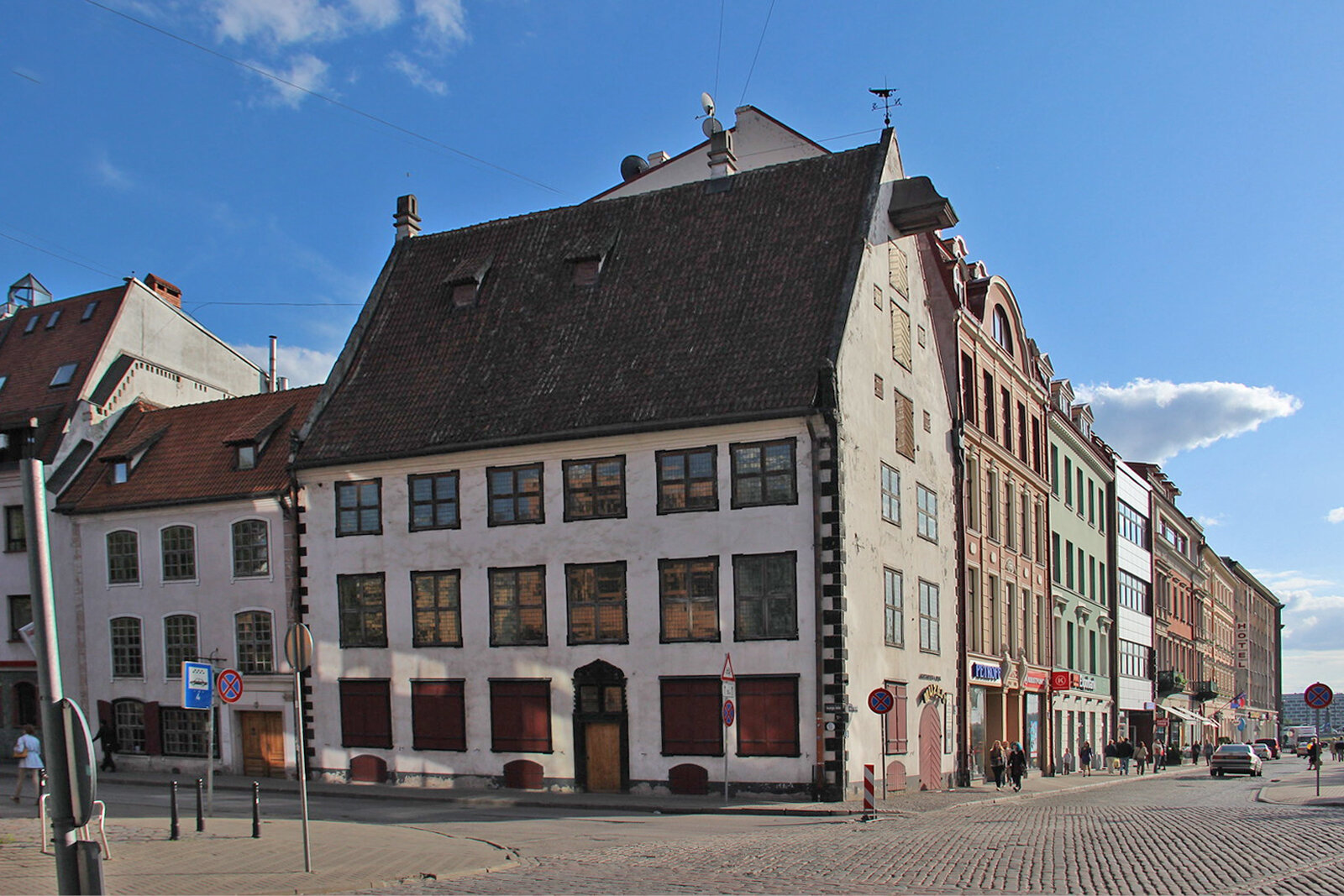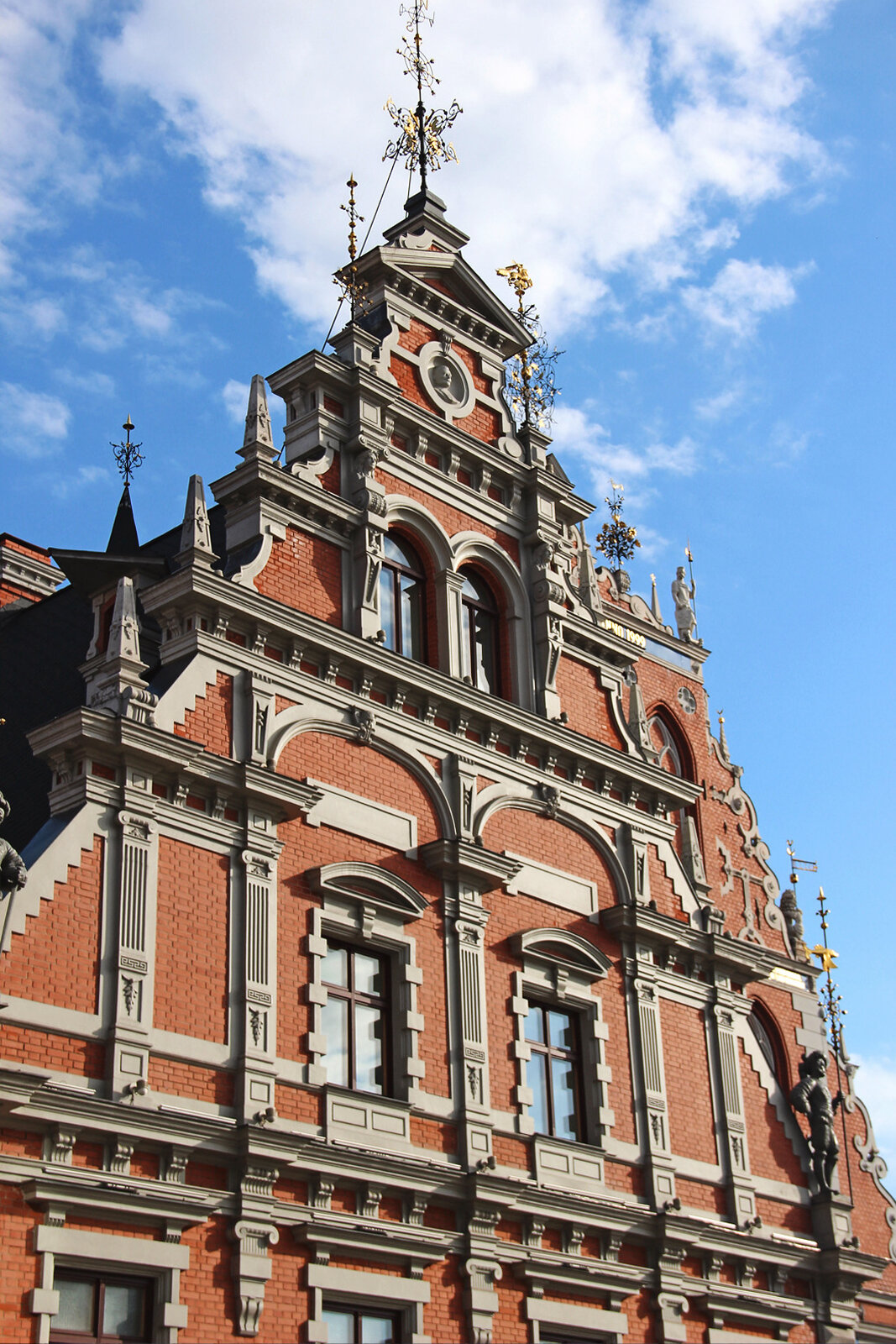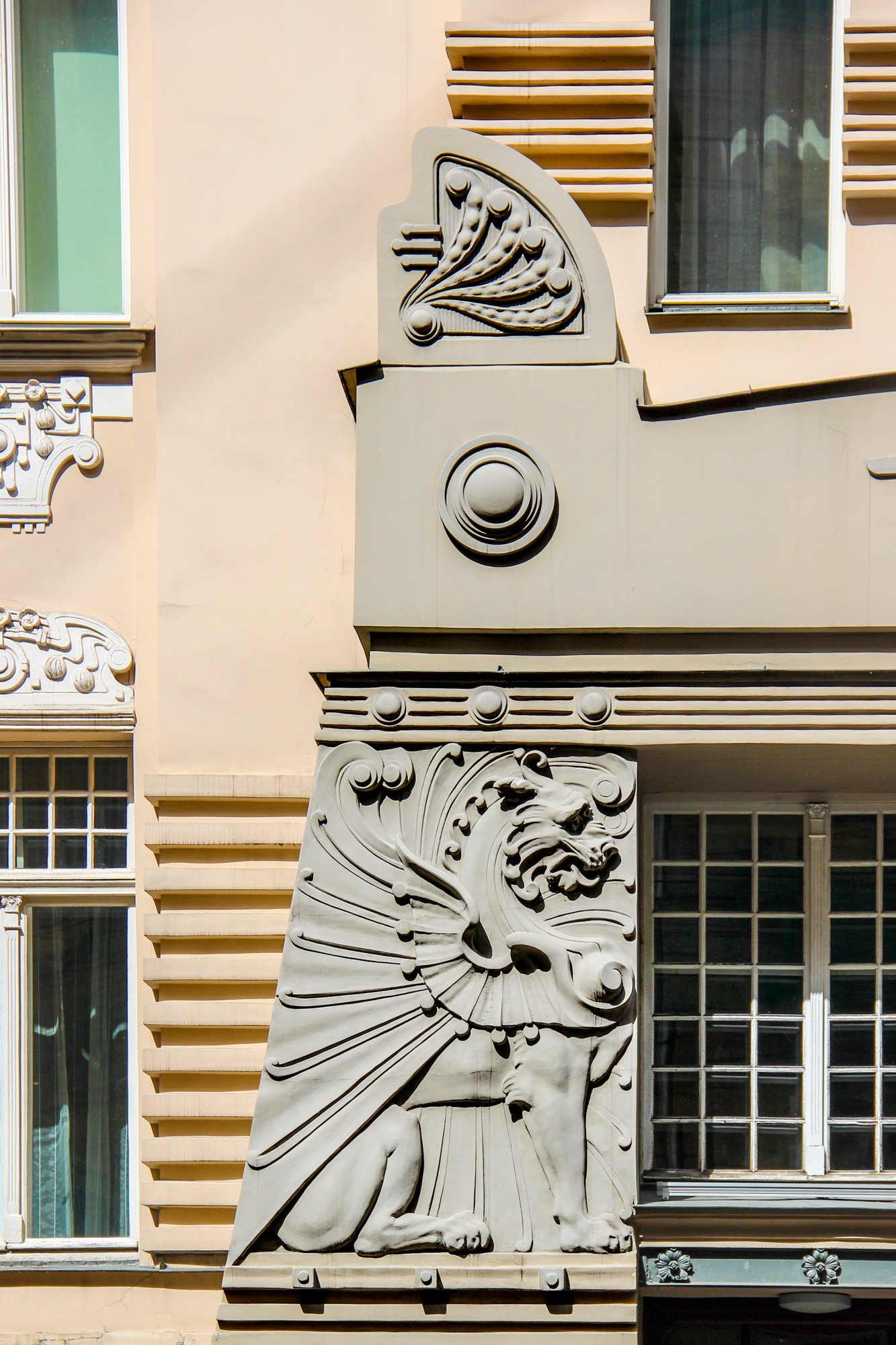The Majesty of Riga
The beauty of Riga was the biggest surprise from my first trip to the Baltic states in 2012. The Latvian capital is the biggest metropolis in the Baltic region and the most cosmopolitan of all. After spending a day in the seaside town of Pärnu in Estonia, I was excited about a change of scenery. Compared to my visit to Tallinn and Estonia, I did relatively little research on Latvia and its capital ahead of time. For the first hour, my impression of Riga was not great. After getting dropped off at the Riga International Bus Terminal, it was a quick 12-minute walk to Central Hostel. As I walked down Ernesta Birznieka-Upīša Street, the streetscape became increasingly decrepit. The street was quiet, and many of the grand buildings lining the street appeared abandoned. It was an eerie feeling.
It took a while for me to warm up to Riga. The more time I spent walking around Riga, the more I realized that Riga is in the middle of urban regeneration. Looking beyond the peeling paint, there seem to be renovation projects happening every block. Another quick realization was just the scale of the city. There is a grandeur to Riga that was decidedly absent in Tallinn. My Lonely Planet guidebook did warn that Riga has emerged as a major destination for stag parties. After dark, there was certainly a level of edginess. Although it was not particularly bothersome to me, it did create an interesting contrast to the medieval charm of Riga.
The Hanseatic Riga
As a medieval city, Riga is organized concentrically. The historic center of Riga is the tangle of medieval streets. Just like in the old town of Tallinn, it is easy to get lost and to enjoy the delightful atmosphere. Like Tallinn, Riga was a member of the Hanseatic League and was historically dominated by Baltic Germans in terms of political and economic powers. During this period, ethnic Latvians constituted roughly 90% of the city population but worked as serfs with no social status. Riga was essentially a city of the German merchant class until their mass exodus following the Molotov–Ribbentrop Pact in 1939.
Because of its heritage, Riga could appear amazingly familiar to other Hanseatic cities. However, there is a certain grandeur behind it. Many typical warehouses/townhouses are wider than those in Tallinn or Gdansk. There are also quite a few wide streets (by medieval standards) that bisected the Old Town. Dom Square and its massive cathedral dominate the center of the town. The fan-shaped square is enormous and is a confluence of several different streets. Some of the best stately buildings are on the square. Ironically, the vast square we see today is the result of the demolition of many historic medieval houses during the Soviet occupation period.
Amazingly, Riga has always been incredibly resilient despite the frequent change of the city’s political overlords. Even though Riga is not sitting on the Baltic shore, its location near the mouth of Daugava was a perfect trading post to the Russian interior. The city always has a fair bit of a cosmopolitan character and is the largest metropolis in this corner of Europe. Interestingly, Riga was the largest city in the former Swedish Empire, not Stockholm or Gothenburg. Today’s Riga still prides itself as the center of the Baltic. Not only does Riga have the largest international airport, but the city also hosts more embassies, banks, and international institutions than Tallinn or Vilnius.
The most renowned symbol of Riga is the so-called House of the Blackhead (Melngalvju Nams). Constructed in 1344, these buildings are easily the most ornate building in the city. The Brotherhood of Blackhead was a fraternal order of unmarried merchants and ship owners of Lavonia (today’s Latvia and Estonia). The order is not only a business association but also a military organization that took up arms against both foreign invaders or the ethnic Latvians and Estonians from the rural area. Their grand guildhall is an amazing example of Renaissance and Mannerist architecture. Borderline on the flamboyant excess, the building looks more like a delicate jewel box than a muscular representation of a civic organization.
As you can see in these photos, today's guild hall is sparkingly new. The structure we see today was a reconstruction from the 1990s, soon after the end of the Soviet occupation. The original structure was destroyed by the bombardment of the Nazi air force, with the ruins remaining cleared by the Soviet authorities in the 1960s. Luckily enough, there was plenty of architectural documentation before its demise. Reconstruction may be controversial in some circles, but I could honestly say that the result is magnificent.
I could easily spend half an hour just studying all the beautiful ornamentation. On the facades is the coat of arms of four major Hanseatic cities: Riga, Bremen, Lübeck, and Hamburg. The four allegorical statues beneath were the work of prominent German sculptor August Francs Folcs. It was unfortunate that the museum within was not open during my visit. The interior has also been restored to its former splendor. But for many travelers, the most interesting “fact” about the building is a little in-ground plaque in front, which denotes the location of the first-ever public Christmas tree.
The Interwar Riga
For over a millennium, ethnic Latvians have been subjugated to various foreign powers in their own lands. Their past overlords included the Livonian Order, Teutonic Knights, Danes, Swedes, Nazis, Russians, and finally the Soviets. Like its Baltic neighbors, Latvia took the grapes moments after the dissolution of the Russian Empire to declare its independence in 1918. One of the most important buildings is the Latvian National Theatre, which was constructed as the first Latvian-language theater during the last years of the Russian Empire. The Latvian Declaration of Independence was first read aloud here on the stage of this theater.
A key monument to the interwar period is the Freedom Monument. Besides the House of Blackheads, this Art Deco monument is an icon of Riga. Located at the main entrance to the Old Town, the monument is the perfect backdrop for all kinds of state ceremonies and public memorials. One of the most famous events was the Baltic Way, the 1989 human chain protest that linked Vilnius to Tallinn. The monument was constructed in 1935 to commemorate those who perished in the Latvian War of Independence. Even though it is not attached to a particular government building, two Guards of Honor stood attention in front of the monument during daylight hours. It added a dose of somberness to an otherwise pleasant square.
Amazingly, the monument survived the Soviet occupation despite its symbolism of Latvian sovereignty. The Art Deco monument is absolutely beautiful; the combination of granite, bronze, and travertine are both signifying and uplifting. The enigmatic figure at the top is the Latvian Lady Liberty with three gold stars. Each star symbolizes a province of Latvia. It is a well-publicized legend that Vera Mukhina, the so-called ‘queen of Soviet sculptures,’ intervened and lobbied for the monument's preservation because of its artistic value. Others also thought that the demolition of the monument would unnecessarily stoke the tension between the republican-minded Latvians and Soviet Russians.
As is often the case, the meaning behind the monument was subsequently adapted to fit the Soviet political ideology. The three gold stars were reappropriated to represent the three Baltic Soviet Socialist Republics. The Lady Liberty became Mother Russia, the liberator of the Baltics from Nazi Germany. In a way, I am all for the appropriation if it means the preservation of a historical monument from an earlier era.
All around central Riga are plenty of stately neoclassical buildings from the late 19th century. Many of them became important national institutions for the newly established republic. They include the House of the Livonian Noble Corporation (home to the Latvian parliament today), the Central Bank of Latvia, and the Riga Castle (the official residence of the President). Call me weird, but I always enjoy spotting important national buildings. I often purposefully sought parliament buildings or executive mansions to see what kind of architectural language these buildings could say about the country. For Latvia, these stately buildings speak of the country’s heritage and the determination for sovereignty on the global stage.
Among all the attractions in Riga, the most interesting is arguably the Riga Central Market. These evocative structures are located on the bank of Riga’s historic moat. Composed of five different structures, the market is Europe's largest indoor market structure. Large enough to host over three thousand vendors at any one time, it is a vast emporium of produce and everyday goods. The market was incredibly cool for visitors because they were initially built as hangers for German Zeppelin airships; they were sort of the airport of the era. Although Riga Central Market cannot compete with the splendor of other great European marketplaces like Budapest or Rotterdam, its associations with the Zepplin just can’t be beaten.
Constructed in neoclassical and Art Deco style, the market hall has been restored to its former glory. Behind the austere facade, the market inside was hopping. To get away from the hustle of the touristy scene of central Riga, a visit to the central market was refreshing. My favorite photo from this trip was taken outside of the market. A lady dressed in the color of the Latvian flag stood in silence and enjoyed the soft afternoon sun; it was just a beautiful sight.
The Soviet Riga
Of the three Baltic capitals, it is often said that Riga lost the most during the Soviet occupation. The city’s Baltic Germans were forcibly relocated at the request of Hilter after the non-aggression pact he signed with Josef Stalin. The Nazis decimated Riga’s sizeable Jewish community during the German occupation. Ethnic Latvians became the minority in their own capital after the Soviet policy of Russification and immigration of ethnic Russians. It was not until 2006 that ethnic Latvians finally became the most dominant ethnicity in Riga.
The most visible relic from the Soviet period is the Latvian Academy of Sciences, just a few blocks south of Riga Central Station. It is one of the few Stalinist skyscrapers constructed outside of Soviet Russia. Its closest cousin has got to be the Palace of Culture and Science in Warsaw. The two structures have identical general forms and appearances except for the scale. As a secret aficionado of Soviet architecture, I was excited to expect every little detail on the facade. A hallmark of Stalinist architecture is ‘socialist in content’ but ‘national in character.’ By that, it means an abundance of Soviet hammers and sickles, but with Latvian traditional decorative patterns.
While much smaller than Warsaw’s Palace of Culture, the massive skyscraper stood out like a sore thumb in the historic skyline. Planned as a conference facility for the agricultural union, the building became the main office and laboratory of the science academy. It honestly gave out this spooky feeling, as if this is where the KGB developed their nerve agent for all the assassination projects. Naturally, the locals are not quite fond of the building, nicknamed ‘Stalin's birthday cake’ and ‘the Kremlin.’ Those nicknames are nicer than what Varsovian called their tower: ‘Stalin’s penis.’
To round up a tour of Soviet Riga, a trip to the Museum of the Occupation of Latvia is obligatory. If you were doing a swing of Baltic states, the museum of occupations in all three Baltic capitals is necessary. Interestingly, the museum was established at the suggestion of an American professor from Wisconsin. What is particularly unusual about the museum is the building itself. It is a bronze-clad windowless block sitting on a concrete platform. But the most shocking is that this alien-looking building was located right next to the ornate House of Blackhead. It is as odd of a juxtaposition as it could be. Hopefully, the planned addition to the museum would help contextualize it a little more.
An unexpected architectural delight from the Soviet period is the Riga Radio and TV Tower. At 1,200 feet, it is the tallest free-standing structure in the European Union. It is a beautiful and unusual design for a radio tower. But what is interesting is the anecdote that the tower's design was modeled after the Eiffel Tower! And speaking of the radio tower, I am pleasantly surprised by the beauty of Riga’s riverfront. Even though it was cut off from the Old Town by a busy road, it offers beautiful views of the city’s modern landmarks, such as Vanšu Bridge and the National Library of Latvia.
The Art Nouveau Riga
Unbeknown to most first-time visitors, Riga has one of Europe's largest collections and the highest concentration of Art Nouveau architecture. By some accounting, the Art Nouveau building constitutes 40% of all structures in central Riga, which is staggering. These buildings are a cornerstone of Riga’s UNESCO World Heritage Sites designation. It is amazing to see how these magnificent buildings survived the ravages of World War II and decades of Soviet occupation. A walking tour of the Art Nouveau District is often considered the must-do for your trip to Riga.
The story of Art Nouveau in Riga is inevitably tied to Mikhail Eisenstein. His career coincided with the period of economic expansion and the construction boom in Riga; people were eager to express individuality in this period of prosperity. Both talented and a little mad, Eisenstein was inspired by a visit to Paris and Vienna, where the style was all the rage. He went around the property owners and volunteered to design many of these buildings free of charge because of his passion for Riga and Art Nouveau. As an architect, I respect his passion but disagree with crazy architects offering their service for free.
Eisenstein decoration regiment is nothing short of bizarre. The exuberance of the details is mind-boggling over the top. The most famous example is No. 10b on Elizbeth Street (Elizabetes iela), where oversized faces turned the corner to create both a crude and fascinating effect. For those with limited time, the best street for Art Nouveau is Albert Street (Alberta iela). Many of the most celebrated buildings are on the street, including building No. 12 at the corner. This building epitomizes the great subtitle of Art Nouveau by combining the Dutch Renaissance, neo-Gothic, and Barque architecture. It just happens the building also houses the Riga Art Nouveau Museum.


































